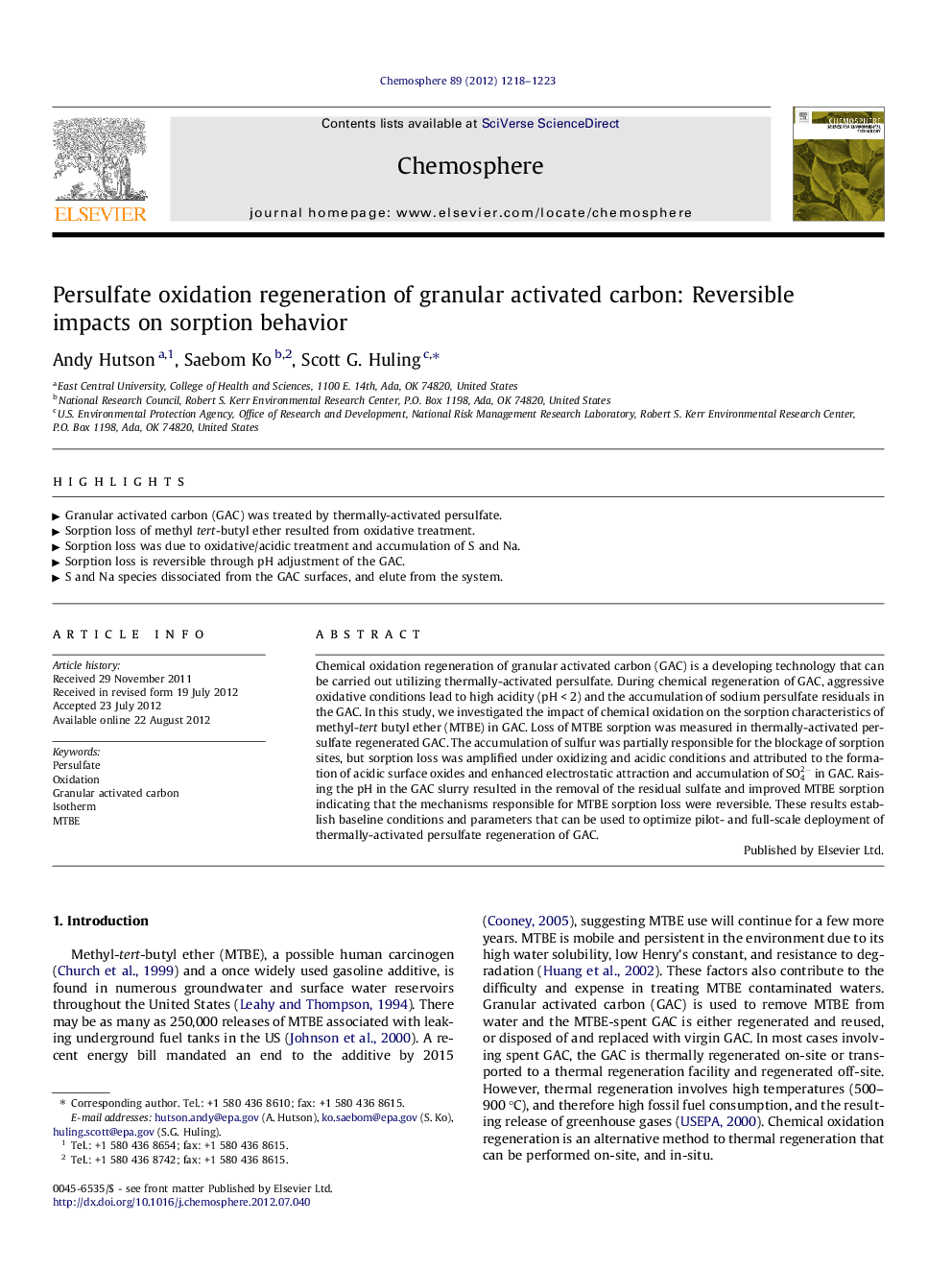| کد مقاله | کد نشریه | سال انتشار | مقاله انگلیسی | نسخه تمام متن |
|---|---|---|---|---|
| 4409889 | 1307515 | 2012 | 6 صفحه PDF | دانلود رایگان |

Chemical oxidation regeneration of granular activated carbon (GAC) is a developing technology that can be carried out utilizing thermally-activated persulfate. During chemical regeneration of GAC, aggressive oxidative conditions lead to high acidity (pH < 2) and the accumulation of sodium persulfate residuals in the GAC. In this study, we investigated the impact of chemical oxidation on the sorption characteristics of methyl-tert butyl ether (MTBE) in GAC. Loss of MTBE sorption was measured in thermally-activated persulfate regenerated GAC. The accumulation of sulfur was partially responsible for the blockage of sorption sites, but sorption loss was amplified under oxidizing and acidic conditions and attributed to the formation of acidic surface oxides and enhanced electrostatic attraction and accumulation of SO42- in GAC. Raising the pH in the GAC slurry resulted in the removal of the residual sulfate and improved MTBE sorption indicating that the mechanisms responsible for MTBE sorption loss were reversible. These results establish baseline conditions and parameters that can be used to optimize pilot- and full-scale deployment of thermally-activated persulfate regeneration of GAC.
► Granular activated carbon (GAC) was treated by thermally-activated persulfate.
► Sorption loss of methyl tert-butyl ether resulted from oxidative treatment.
► Sorption loss was due to oxidative/acidic treatment and accumulation of S and Na.
► Sorption loss is reversible through pH adjustment of the GAC.
► S and Na species dissociated from the GAC surfaces, and elute from the system.
Journal: Chemosphere - Volume 89, Issue 10, November 2012, Pages 1218–1223